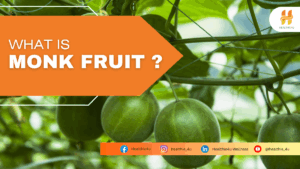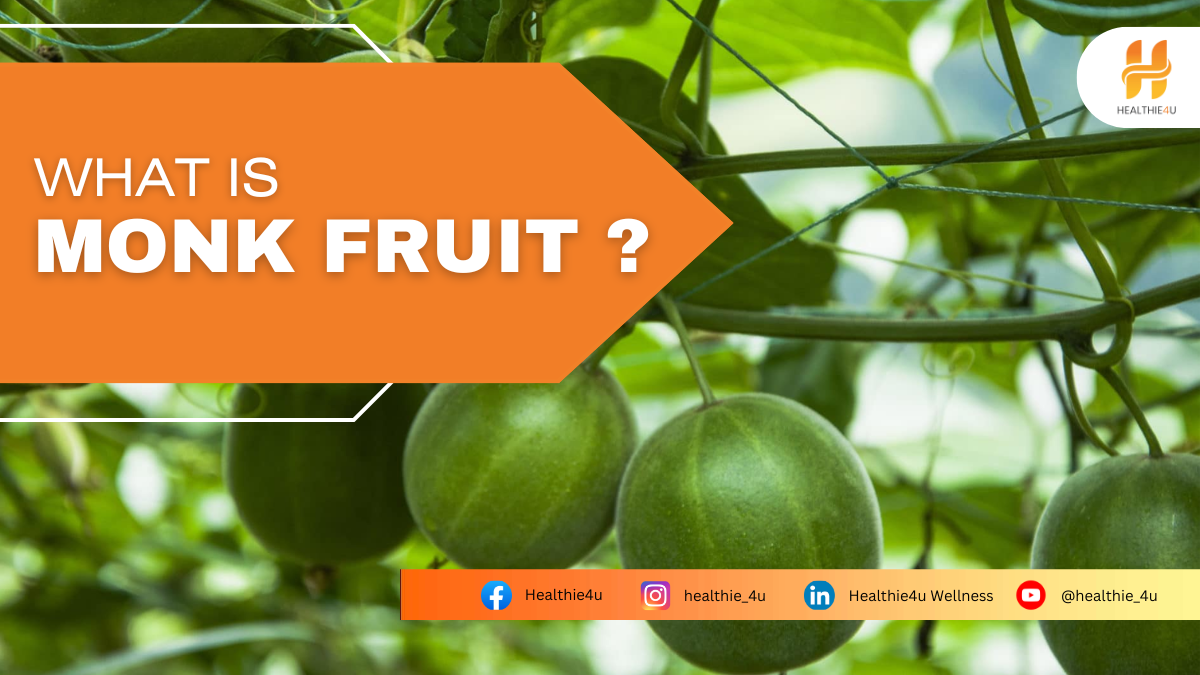
What is Monk Fruit?
As people look for healthier sweeteners, monk fruit has become a favorite among health-conscious individuals and sugar lovers. But what exactly is monk fruit, and how can it improve your diet? Let’s take a closer look at this interesting fruit, its benefits, and how to use it.
Monk fruit, also known as luo han guo or Swingle fruit, is a small, round fruit. Its extract, commonly referred to as luo han guo fruit extract, has recently emerged as a natural sweetener and a popular sugar alternative. It has been approved as safe by the U.S. Food and Drug Administration (FDA) and has no known side effects.
To make monk fruit sweetener, manufacturers crush the fruit to get its juice and then take out the mogrosides from that juice. These mogrosides are over 100 times sweeter than sugar but have no calories.
Monk fruit sweeteners can be used in many drinks and foods, including soft drinks, juices, dairy products, desserts, candies, and sauces.
Health benefits:
- Aids in weight management- Monk fruit sweetener contains no calories, making it a great option for anyone aiming to lower their caloric intake or manage their weight.
- Diabetic friendly- Monk fruit does not impact blood sugar and insulin levels in the same way that sweeteners like table sugar, honey and jaggery.
- Rich in Antioxidants- The mogrosides found in monk fruit possess antioxidant properties that can help fight oxidative stress in the body.
Monk Fruit vs. Other Sweeteners
- Monk fruit vs Sugar– Monk fruit does not raise blood sugar levels, making it suitable for diabetics, whereas sugar can cause spikes in blood glucose and insulin levels.
- Monk fruit vs Honey- Monk fruit is significantly sweeter than honey, so you need less of it to reach the same level of sweetness.
- Monk fruit vs Stevia- Monk fruit offers a flavour that resembles sugar and lacks the bitter aftertaste that some people experience with stevia.
- Monk fruit vs Artificial sweetener- Monk fruit is a natural sweetener, whereas aspartame and sucralose are artificial sweeteners that may be linked to potential long-term health concerns.
Here are some easy ways to incorporate monk fruit into your diet:
- Beverages– Add it into tea, coffee, smoothies, or flavoured water for a calorie-free sweetener. Since it’s much sweeter than sugar, you’ll only need a small amount to achieve the desired sweetness.
- Baking- Replace sugar with monk fruit sweetener in your baking recipes, but keep in mind that it’s much sweeter than sugar.
- Cooking- Use monk fruit in savoury dishes as well. Add it to sauces, marinades, or dressings to give them a touch of sweetness without the calories.
- Breakfast- Sprinkle it over oatmeal, yoghurt, or cereal to make them sweeter.
- Snacks- Blend it into homemade energy bites or protein bars for added sweetness.
- Desserts- Use monk fruit in your recipes for cookies, cakes, or puddings to enjoy a healthier treat.
In summary, monk fruit is an outstanding natural sweetener that not only satisfies your cravings but also supports your health goals. Its distinctive qualities make it an ideal substitute for sugar and other sweeteners, particularly for those mindful of calories and blood sugar levels. Whether you’re mixing it into your morning coffee or incorporating it into baked goods, monk fruit offers a tasty and guilt-free way to enjoy sweetness. Embrace this wonderful fruit and elevate your diet today!



